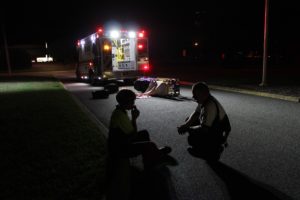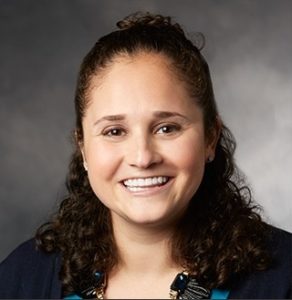
Contributor: Mark S. Gold, M.D., Professor, Washington University School of Medicine – Department of Psychiatry
Co-contributor: Jessica Gold, M.D., M.S., Assistant Professor, Washington University in St Louis School of Medicine – Department of Psychiatry
Demi Lovato was hospitalized after reportedly overdosing in her Hollywood Hills home [1]. While we do not know many details, we do know that the pop star is currently receiving medical care in a Los Angeles Hospital after she was treated with Naloxone (Narcan), an opioid overdose antidote medication administered for opioid emergencies.
Everyone around her will wonder what they might have done differently, and she will ask herself the same things and more. Her current condition remains unknown.
Because of the surge in opioid overdose-related mortality, considerable resources have been devoted to emergency response and the widespread dissemination of the mu-opioid receptor antagonist naloxone.
Naloxone (Narcan) is a “rescue” medication administered by emergency departments, health professionals, the lay public, and/or first responders. It is typically given when a person shows signs of an opioid overdose, or it is suspected based on their history.
The person may be unconscious, have a shallow pulse, decreased respirations, pinpoint pupils or, more obviously, could be found nearly deceased with a needle in their arm. Naloxone is analogous to CPR or cardioversion in acute cardiovascular compromise: it provides acute rescue and is lifesaving – but does not change the chronic, underlying pathology that led to the acute event in the first place.
In other words, Naloxone use has been successful in saving lives, but does not treat the underlying OUD; hence, overdose prevalence continues to increase. In fact, opioid overdose deaths are skyrocketing.
The number of deaths due to an opioid overdose quadrupled between 1999 and 2015 then further increased to over 60,000. Drug overdose is now the leading cause of accidental death in the United States [2].
One reason for this surge is that we do not just have an oxycontin problem anymore. When we had a pharmaceutical oxycontin problem, users knew how much of an opioid they were taking. It was written on the oxy pills.
Once the users switched to illicit opioids like heroin, all sorts of things could be and were added to the heroin or the drug users thought they were buying [3]. Illicitly manufactured fentanyl, a synthetic opioid 50-100 times more potent than morphine, is added to heroin (and other drugs) and primarily responsible for the increased deaths.
Even cocaine overdoses appear to be due to fentanyl being added to the illegally sold drug. Illicit drugs simply mean that the drug is a combination of most anything and everything and you never can truly know what is in it.
 First responders have learned that whatever the person or those around them may say about the drug ingested or injected, if they are comatose, it is a good thing to give naloxone. If they are right, or it is even part of the drug the person ingested, they could save a life.
First responders have learned that whatever the person or those around them may say about the drug ingested or injected, if they are comatose, it is a good thing to give naloxone. If they are right, or it is even part of the drug the person ingested, they could save a life.
Even though it is not a treatment, we are quite fortunate to have naloxone the wonder antidote for overdose and have been fortunate for some time. It was invented by Jack Fishman in 1971 [4]. During his early career, Dr. Mark Gold remembers giving it to a patient who was not breathing and turning blue.
He couldn’t feel a pulse and his pupils were pinpoints. Dr. Gold wondered if the patient might have had a stroke, but after a few doses of Narcan, he woke up and said something like “ why did you ruin my high?”. This is an image that stays with Dr. Gold to this day, in both the efficacy and speed of recovery to this patient.
Without Narcan, this tragic opioid overdose and death epidemic would be much worse. But, when you save the person, that is really when the hard work starts.
As a clinician, you have to ask yourself–What caused her heart to stop? What is her social situation that might further hinder her recovery? What disease or diseases are present that need evaluation and/or treatment?
There are often co-occurring disorders that need to be treated but are often missed when focusing just on the OUD. Co-occurring medical, neurological, hormonal, dental, and infectious diseases are so common, but also generally ignored as treatment of one predominates.
In Dr. Mark Gold’s work with intravenous addicts, HIV, HPV, Hepatitis C are common co-occurring and important infectious diseases to identify and treat. When it comes to psychiatric co-morbidity, depression, schizophrenia, and bipolar disorder are common. Recent research has gone further and suggested that many accidental overdoses are actually suicide attempts [5].
As an eating disorder provider, it is also important to be on the look-out for co-occurring substance use disorders. Patients with binge eating disorders have more substance use disorders [6], and treatment of both is important and necessary rather than treatment of either alone [7].
Science supports evaluation and treatment of both disorders and not one or the other. Genetics which clearly overlap for both ED and SUD disorders may help explain why these psychiatric diseases are so commonly found together [8].
The reward pathways are equally important to understanding this overlap, as the eating disorders, gambling, sexual compulsivities and overeating often emerge once acute detoxification from opioids is completed.
It is all just so complicated and layered that it is hard to believe that Kurt Cobain was sent to a detox only facility as if other problems will disappear once detoxification is complete. Like overdose reversal, detoxification is not a treatment for addiction.
While we did not have medically assisted treatments for methamphetamine overdose or dependence or cocaine overdose or dependence, we do have many treatments for opioid dependence. We have clonidine [9] and lofexidine [10] to aid in the discomfort of detoxification.
 We have medically assisted therapies for opioid use disorders like methadone, oral naltrexone, injectable naltrexone, buprenorphine, suboxone. We also newly have Probuphine to treat craving and prevent relapse.
We have medically assisted therapies for opioid use disorders like methadone, oral naltrexone, injectable naltrexone, buprenorphine, suboxone. We also newly have Probuphine to treat craving and prevent relapse.
We have programs in hospitals, rehabs, programs, and also for outpatients which combine medications and therapies. Still, it does seem like medical progress has had limited effect.
It is not like the strep throat where penicillin can cure the patient regardless of what they think about treatment. It is not like polio where your parents saved you, and you did not have to do anything to prevent getting the disease.
Here, if you rely too much on the program or the therapist or even the medications, you will find that addiction and eating disorders treatment doesn’t work. Even still, we cannot blame the patient for relapsing even after years of sobriety when none of our treatments are a cure.
Demi Lovato may have apologized to her dad, her mom, and her fans, among others, in her recent song “Sober,” in which she disclosed her relapse. Yet, in actuality, while she has to do the work to get better, we truly can’t blame her for her overdose.
We must always remember that addiction is a brain disease and that drugs hijack the brain. While all drugs share common effects on the brain, some are more disruptive to brain circuits, cause actual injuries [11], and undermines motivational circuits of the brain.
Dysregulation of these circuits is caused by exaggerated drug-related incentive salience and habit formation which Dr. Mark Gold’s group has looked at from the reward deficit point of view. What Koob has called the dark side is the opposite of rewarding effects of drugs.
As drug taking becomes compulsive-like, the factors that motivate drug seeking and drug taking shift from drug-seeking driven by only positive reinforcement to motivation by extreme negative reinforcement.
Drugs of abuse stimulate their own taking, despite negative consequences to one’s social environment or physical health, and create a new drive state that supports their continued use.
Drugs, especially like methamphetamine, can even change the brain in ways similar to a concussion and with that level of severity. Once use becomes compulsive and addictive, it is a serious life threatening and life shortening medical problem.
If you add to substance use depression, brain injury, eating disorders, trauma, sleep problems and more, you can see that the disease only magnifies. Addiction can stay dormant until just one use re-starts the vicious cycle.
We have made great progress in understanding the neurobiology of addiction since Dr. Mark Gold started in this field in the early 1970s [12]. Medications to reverse overdoses, medications to manage cravings, prevent overdose and use are part of this progress [13].
Though medically assisted treatments use is increasing, we are still not at utilization that we need or want. The treatments also are not perfect. For example, we have not been able to use our insights to test patients and then find and match what should be an effective treatment for them.
We have also not been able to reverse addicting drugs effects on the brain’s reward threshold, pleasure systems, and dopamine cells. Advancement is happening, but the overdose crisis is outpacing discovery.

From Demi Lovato Facebook Page
Even those who have been sober for years, like Demi Lovato, can relapse and relapse quickly. With even that one use, all of the memories of drug use that had become inaccessible to their sober selves come flooding back in.
They remember where to find drugs, how drugs felt, who to do drugs with, and their state-dependent memory only furthers their downward spiral of use. We are lucky to have antidotes like Narcan, emergency and first responders who can use it, and treatment programs with experts trained in co-occurring or dual disorders.
We may have new discoveries that need to be done and done quickly, but at least for now we have the tools to save a life and give someone a second or third chance at the challenging, but possible path to long-term recovery.
Resources for you or your loved one to find help now:
Article Written By:
 Mark S. Gold, M.D., Professor, Washington University School of Medicine – Department of Psychiatry. He also served as Professor, the Donald Dizney Eminent Scholar, Distinguished Professor and Chair of Psychiatry from 1990-2014. Dr. Gold was the first Faculty from the College of Medicine to be selected as a University-wide Distinguished Alumni Professor and served as the 17th University of Florida’s Distinguished Alumni Professor.
Mark S. Gold, M.D., Professor, Washington University School of Medicine – Department of Psychiatry. He also served as Professor, the Donald Dizney Eminent Scholar, Distinguished Professor and Chair of Psychiatry from 1990-2014. Dr. Gold was the first Faculty from the College of Medicine to be selected as a University-wide Distinguished Alumni Professor and served as the 17th University of Florida’s Distinguished Alumni Professor.
Learn more about Mark S. Gold, MD
 Jessica (“Jessi”) Gold, M.D., M.S., is an Assistant Professor in the Department of Psychiatry at Washington University in St Louis School of Medicine, specializing in college mental health, medical education, and physician wellness. She writes regularly for the popular press about mental health, stigma, and medical training. Dr. Gold is a graduate of the University of Pennsylvania where she did her undergraduate and Masters in Science in Anthropology and the Yale School of Medicine. She can be found at @drjessigold or drjessigold.com
Jessica (“Jessi”) Gold, M.D., M.S., is an Assistant Professor in the Department of Psychiatry at Washington University in St Louis School of Medicine, specializing in college mental health, medical education, and physician wellness. She writes regularly for the popular press about mental health, stigma, and medical training. Dr. Gold is a graduate of the University of Pennsylvania where she did her undergraduate and Masters in Science in Anthropology and the Yale School of Medicine. She can be found at @drjessigold or drjessigold.com
Sources:
[1] https://www.billboard.com/articles/news/8466907/demi-lovato-heroin-overdose-report
[2] https://www.surgeongeneral.gov/priorities/opioid-overdose-prevention/index.html
[3] https://www.mdedge.com/psychiatry/article/164315/addiction-medicine/adulterants-opioids-are-rule-implications-clinical-care/page/0/1
[4] https://www.nytimes.com/2013/12/15/business/jack-fishman-who-helped-develop-a-drug-to-treat-overdoses-dies-at-83.html
[5] https://www.mdedge.com/psychiatry/article/145653/addiction-medicine/missed-opportunities-opioid-overdoses-and-suicide;.Oquendo MA1, Volkow ND1.Suicide: A Silent Contributor to Opioid-Overdose Deaths. N Engl J Med. 2018 Apr 26;378(17):1567-1569. doi: 10.1056/NEJMp1801417
[6] Fouladi F1, Mitchell JE2,3, Crosby RD2,3, Engel SG2,3, Crow S4,5, Hill L6, Le Grange D7, Powers P8, Steffen KJ1,2.Prevalence of Alcohol and Other Substance Use in Patients with Eating Disorders. Eur Eat Disord Rev. 2015 Nov;23(6):531-6. doi: 10.1002/erv.2410. Epub 2015 Sep 29.
[7] Becker DF1, Grilo CM2 Comorbidity of mood and substance use disorders in patients with binge-eating disorder: Associations with personality disorder and eating disorder pathology..J Psychosom Res. 2015 Aug;79(2):159-64. doi: 10.1016/j.jpsychores.2015.01.016. Epub 2015 Feb 7.
[8] Munn-Chernoff MA1, Baker JH1. A Primer on the Genetics of Comorbid Eating Disorders and Substance Use Disorders.Eur Eat Disord Rev. 2016 Mar;24(2):91-100. doi: 10.1002/erv.2424. Epub 2015 Dec 14.
[9] Gold, MarkS. et al.CLONIDINE BLOCKS ACUTE OPIATE-WITHDRAWAL SYMPTOMS The Lancet , Volume 312 , Issue 8090 , 599 – 602
[10] Washton, ArnoldM. et al.LOFEXIDINE, A CLONIDINE ANALOGUE EFFECTIVE IN OPIATE WITHDRAWAL The Lancet , Volume 317 , Issue 8227 , 991 – 993
[11] https://www.mdedge.com/psychiatry/article/150344/addiction-medicine/methamphetamine-induced-psychosis-who-says-all-drug-use
[12] Volkow ND, Koob GF, McLellan AT. Neurobiologic Advances from the Brain Disease Model of Addiction. N Engl J Med. 2016 Jan 28;374(4):363-71. doi: 10.1056/NEJMra1511480
[13] Volkow ND, McLellan AT.Mitigation Strategies for Opioid Abuse. N Engl J Med. 2016 Jul 7;375(1):96. doi: 10.1056/NEJMc1605652
The opinions and views of our guest contributors, are shared to provide a broad perspective of addictions. These are not necessarily the views of Addiction Hope, but an effort to offer a discussion of various issues by different concerned individuals.
We at Addiction Hope understand that addictions result from multiple physical, emotional, environmental and genetic factors. If you or a loved one are suffering from an addiction, please know that there is hope for you, and seek immediate professional help.
Published on July 24, 2018
Reviewed by Jacquelyn Ekern, MS, LPC on July 24, 2018
Published on AddictionHope.com
***top featured photo of Demi Lovato attributed to Frazer Harrison/Getty Images
